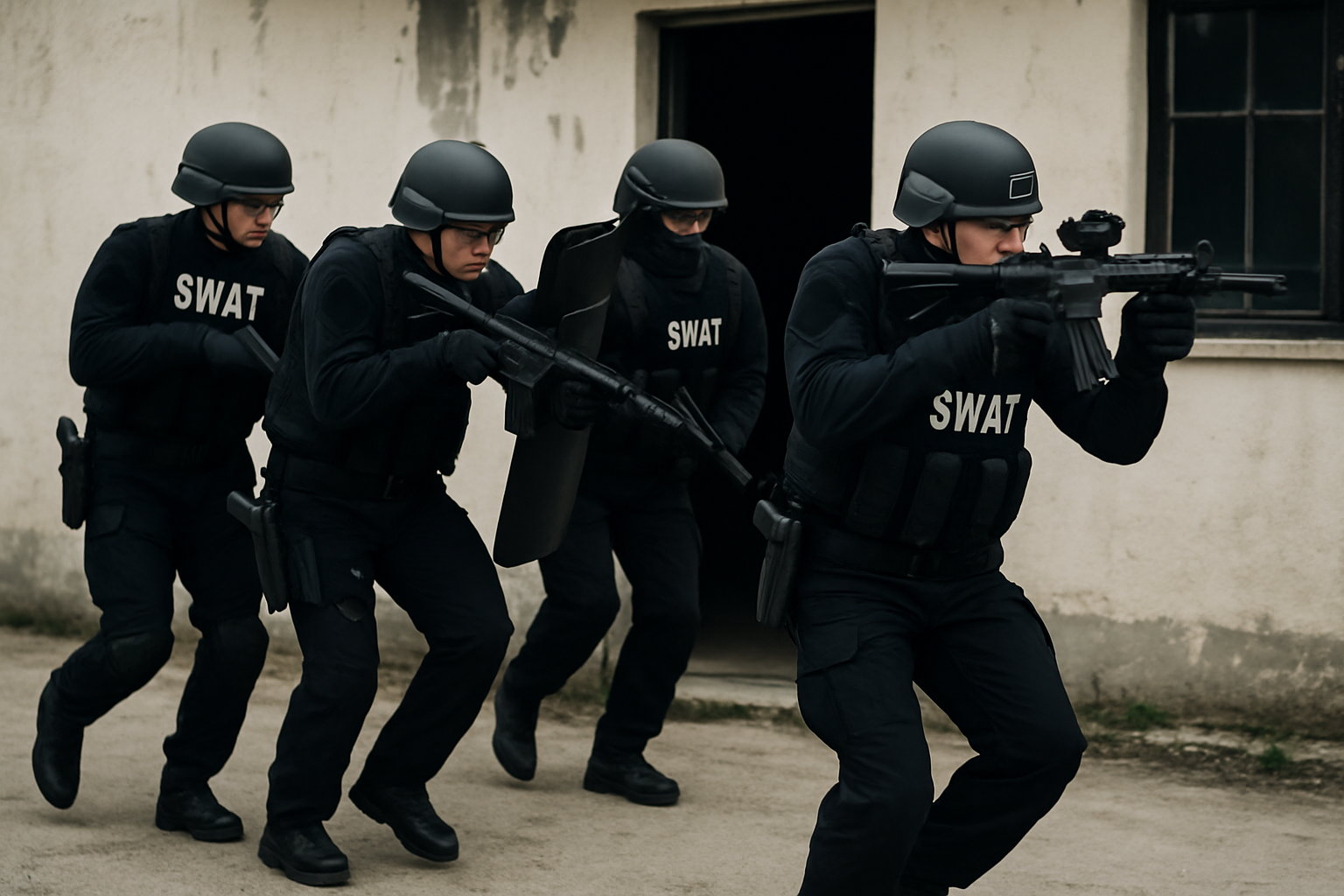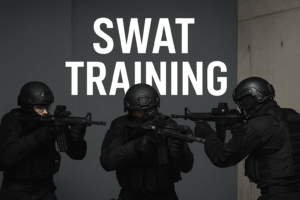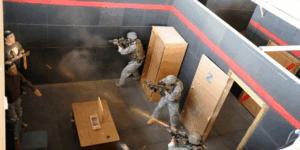SWAT training is a critical investment for tactical teams and security professionals seeking to sharpen their response to high‑risk, high‑pressure situations from the very first moment, ensuring precision, coordination, and confidence. At Active Crisis, SWAT training is meticulously designed to prepare participants for real‑world threats.
What Makes SWAT Training Essential for Tactical Teams
SWAT training immerses law enforcement, private security, and tactical units in the art of operating within urban and confined environments. The course emphasizes dynamic entry techniques, hostage rescue protocols, threat neutralization, close‑quarters engagement, suspect apprehension, and incident response under intense pressure—and it’s all about building the ability to act decisively as a unit under chaos. This structured approach ensures teams can operate with precision, discipline, and rapid decision‑making from mission start to finish. Visit the Active Crisis SWAT training page for program details.
Core Components of SWAT Training
Strong SWAT training balances technical skill with mental readiness. Here's how:
Close‑Quarters Combat & Dynamic Entry
Teams master the careful art of breaching and entering, moving through tight hallways, stacked formations, and corners, all while maintaining control and composure.
Team Communication & Coordination
Coordinated execution is key—SWAT training reinforces verbal brevity codes, hand signals, and synchronized movements so teams can operate effectively under duress.
Hostage Scenarios & High‑Risk Arrests
Participants engage in scenarios demanding strategic control over live threats, with an emphasis on minimizing civilian risk and demonstrating leadership under pressure.
Tactical Leadership & Real‑World Simulation
Training is grounded in real-world environments—multi‑level buildings, barricaded suspects, and complex civilian presence—focusing on live‑force, scenario‑based rehearsal.
Bridging Training Gaps with Active Crisis’ Approach
Too often, training fails to match the tactical realities faced by teams in the field. Active Crisis addresses these gaps by providing scenario-based instruction that mirrors actual urban challenges. Trainers with real-world experience help refine coordination, response times, and decision-making in simulated environments. Their SWAT training integrates with other programs like red‑team drills, breacher techniques, and survival/evasion modules for a truly comprehensive training loop.
Modular Training That Scales to Mission Needs
What sets Active Crisis's SWAT training apart is its adaptability. Whether preparing a small rural response unit or an urban tactical team, the curriculum is customized to fit the mission's scale, threat environment, and participant experience. Courses are led by instructors from military special operations, federal law enforcement, and active SWAT backgrounds—bringing operational relevance to every lesson.
Measurable Impact: Confidence and Capability
From Florida sheriff’s departments to private security units, organizations participating in Active Crisis training consistently report improved response times, tactical coordination, and confidence under stress. One Florida case study vividly illustrates this: officers faced difficulty clearing a hallway with adjacent rooms; within 30 seconds of guidance, the issue was resolved—highlighting the effectiveness of targeted training.
Teams also report enhanced cross-agency coordination, especially during multi-jurisdiction responses—critical for operations where local, federal, and private units converge.
Why SWAT Training Should Be Part of Every Tactical Strategy
SWAT training is foundational for any team tasked with tactical readiness. From hostage recovery to high-risk arrest operations, investing in the right training provider—like Active Crisis—makes a mission-critical difference. For teams ready to elevate their breaching, communication, and decision-making capabilities.
Visit our Swat Training page to explore how we can transform your tactical preparedness and safety strategy.




